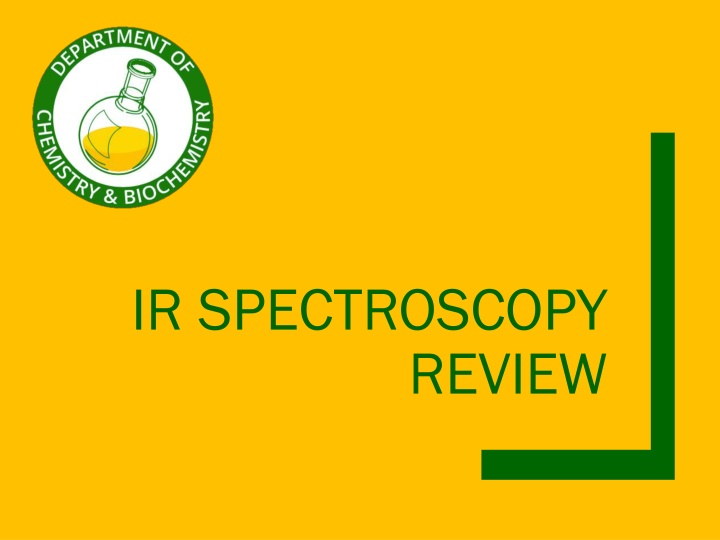
Infrared Spectroscopy Review: Uses, Molecular Vibrations, and Examples
Explore the world of infrared spectroscopy with this comprehensive review covering its uses in distinguishing compounds, information about functional groups, molecular vibrations, and detailed examples of alkane, aromatic, alkyne, alcohol, amine, ketone, aldehyde, carboxylic acid, and ester compounds. See how IR spectra can help in identifying and understanding chemical structures.
Download Presentation

Please find below an Image/Link to download the presentation.
The content on the website is provided AS IS for your information and personal use only. It may not be sold, licensed, or shared on other websites without obtaining consent from the author. If you encounter any issues during the download, it is possible that the publisher has removed the file from their server.
You are allowed to download the files provided on this website for personal or commercial use, subject to the condition that they are used lawfully. All files are the property of their respective owners.
The content on the website is provided AS IS for your information and personal use only. It may not be sold, licensed, or shared on other websites without obtaining consent from the author.
E N D
Presentation Transcript
IR SPECTROSCOPY REVIEW
Spectroscopy & Structure All spectroscopic techniques are used in two ways: To prove that two compounds are identical A compound s spectra are unique to that compound To help establish the structure of a new compound Each spectroscopic technique provides different, important information about structure
Infrared Spectroscopy Two uses for IR IR spectra can be used to distinguish one compound from another ( fingerprint ) Information about the functional groups present in a compound Molecular Vibrations Absorption of infrared radiation corresponds to energy changes on the order of 8-40 KJ/mole (2-10 kcal/mol) The frequencies in this energy range correspond to the stretching and bending frequencies of covalent bonds, that is, changes in bond length and bond angle.
Alkane: Decane CH3(CH2)8CH3
